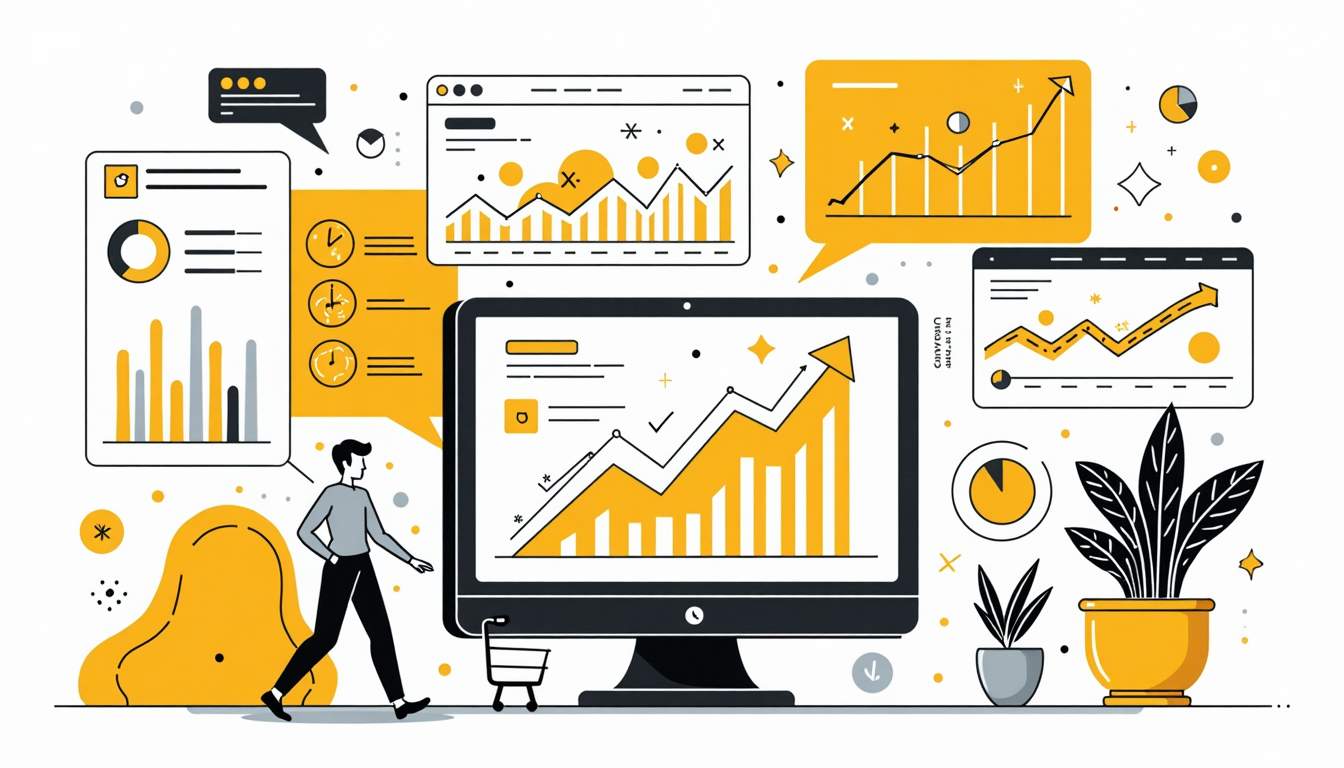Artificial intelligence (AI) has rapidly transformed the marketing landscape, promising unprecedented efficiency, personalization, and insight. Yet, amid the buzz and excitement, it’s crucial to separate genuine breakthroughs from overblown hype. Marketers face a crowded field of AI tools and claims, making it harder than ever to discern which technologies truly deliver value and which are just flashy distractions.
In this comprehensive playbook, we’ll explore the AI marketing strategies that are proving their worth in 2024, backed by data and real-world examples. We’ll also highlight common misconceptions and pitfalls to avoid, helping you craft an AI-powered marketing approach that’s both effective and sustainable.
Understanding the AI Marketing Landscape in 2024
AI marketing is no longer a futuristic concept—it’s a present-day reality. According to a recent report by Gartner, by the end of 2024, over 75% of marketing organizations will have deployed at least one AI-powered tool. This widespread adoption is driven by AI’s ability to analyze vast datasets, automate repetitive tasks, and personalize customer interactions at scale.

However, the AI ecosystem is vast and varied, ranging from advanced machine learning models that predict customer behavior to simple chatbots that handle FAQs. Understanding where AI fits in your marketing stack—and what it can realistically achieve—is the first step toward success.
The Core AI Technologies Powering Marketing Today
Several AI technologies have emerged as foundational to modern marketing efforts:
- Natural Language Processing (NLP): Enables tools to understand and generate human language, powering chatbots, content creation, and sentiment analysis.
- Machine Learning (ML): Allows systems to learn from data patterns, improving targeting, predictive analytics, and customer segmentation over time.
- Computer Vision: Used for image recognition and visual content analysis, enhancing social media monitoring and ad optimization.
- Recommendation Engines: Drive personalized product suggestions based on user behavior, boosting conversion rates and average order values.
Each of these technologies plays a distinct role, and successful AI marketing strategies often combine several elements to create a seamless customer experience.
What Works: Proven AI Marketing Strategies Delivering Results
While AI offers many possibilities, some approaches have demonstrated clear, measurable benefits. Here are the AI marketing tactics that consistently deliver ROI and customer engagement.

1. Hyper-Personalization at Scale
Personalization has long been a marketing buzzword, but AI takes it to a new level. By analyzing individual customer data—such as browsing history, purchase patterns, and engagement metrics—AI systems can tailor messages, offers, and product recommendations in real time.
For example, Amazon’s recommendation engine reportedly generates 35% of the company’s revenue by suggesting products uniquely relevant to each shopper. Similarly, Netflix credits its AI-driven personalization for keeping users engaged, reducing churn, and increasing viewing time.
In 2024, marketers leveraging AI for hyper-personalization see an average uplift of 20-30% in conversion rates compared to generic campaigns, according to McKinsey research. The key is combining AI insights with creative messaging that resonates on a human level.
2. AI-Powered Content Creation and Optimization
Creating high-quality content consistently is a major challenge for marketers. AI writing assistants and content generators have matured significantly, enabling teams to produce blog posts, social media updates, email copy, and even video scripts faster than ever.
Tools like OpenAI’s GPT models can draft engaging, SEO-friendly articles that marketers then refine and personalize. This collaboration between humans and AI speeds up content workflows without sacrificing quality.
Moreover, AI-driven content optimization tools analyze audience engagement data to recommend headline tweaks, keyword adjustments, and ideal publishing times. HubSpot reports that marketers using AI content tools experience a 30% increase in organic traffic and a 25% boost in lead generation.
3. Predictive Analytics for Smarter Campaigns
Predictive analytics uses historical data and machine learning to forecast future customer behavior. This capability helps marketers allocate budgets more efficiently, identify high-value leads, and time campaigns for maximum impact.
For instance, predictive scoring models can prioritize prospects most likely to convert, enabling sales teams to focus their efforts strategically. Brands like Coca-Cola and Sephora employ predictive analytics to anticipate trends and optimize inventory, reducing waste and improving customer satisfaction.
According to Forrester, businesses that integrate predictive analytics into their marketing strategies see an average revenue increase of 15-20%, highlighting its growing importance.
4. Conversational AI and Chatbots
Chatbots and virtual assistants have evolved from simple scripted responders to sophisticated conversational agents capable of handling complex queries and guiding customers through purchase journeys.
AI-powered chatbots can provide 24/7 customer support, answer questions instantly, and even upsell products based on user preferences. Gartner predicts that by 2025, 75% of customer service interactions will be powered by AI chatbots, reducing operational costs and improving user experience.
Brands like H&M and Sephora use chatbots not only for customer service but also for personalized shopping assistance, resulting in higher engagement and satisfaction scores.
What’s Just Hype: AI Marketing Myths and Misconceptions
Despite its promise, AI marketing is surrounded by myths that can lead to unrealistic expectations and wasted resources. Understanding these misconceptions helps marketers avoid common traps.
1. AI Will Replace Human Marketers
One of the biggest misconceptions is that AI will render human marketers obsolete. In reality, AI is a tool that enhances human creativity and decision-making rather than replacing it.
AI excels at data processing and pattern recognition but lacks the emotional intelligence, strategic thinking, and nuanced understanding of brand voice that humans bring. The most successful marketing teams use AI to automate routine tasks and generate insights, freeing up time for creative strategy and relationship building.
2. More Data Always Means Better AI
While data is essential for AI, more data isn’t always better. The quality, relevance, and cleanliness of data matter far more than sheer volume. Feeding AI models with inaccurate or biased data can lead to flawed predictions and poor customer experiences.
Marketers should prioritize data governance, regular audits, and ethical considerations to ensure AI outputs are trustworthy and actionable. Investing in data quality often yields better results than simply amassing large datasets.
3. AI Can Deliver Instant Results Without Strategy
AI tools are powerful, but they are not magic bullets. Successful AI marketing requires a clear strategy, defined goals, and ongoing optimization. Without these, even the most advanced AI can produce underwhelming outcomes.
For example, deploying an AI chatbot without integrating it into the broader customer journey or without training it on relevant FAQs will frustrate users rather than delight them. Marketers must view AI as part of a holistic approach rather than a standalone solution.
4. AI Is Only for Big Brands with Huge Budgets
Another common myth is that AI marketing is only accessible to large enterprises. In truth, AI tools have become increasingly affordable and user-friendly, making them accessible to small and medium-sized businesses.
Platforms like Mailchimp, Canva, and Shopify now incorporate AI features that help smaller businesses automate email marketing, design, and customer segmentation without requiring extensive technical expertise or investment.
Startups and SMBs that adopt AI early can gain a competitive edge by improving efficiency and customer engagement at a fraction of the cost previously required.
How to Build an Effective AI Marketing Strategy
To harness AI’s full potential, marketers need a thoughtful, step-by-step approach that balances innovation with practicality.
Step 1: Define Clear Objectives and KPIs
Start by identifying the specific business goals AI can support—whether it’s increasing lead generation, improving customer retention, or boosting average order value. Establish measurable KPIs to track progress and ROI.
Step 2: Audit Your Data and Technology Stack
Evaluate the quality and availability of your customer data. Ensure your existing marketing platforms can integrate with AI tools or consider upgrading to systems that support AI capabilities.
Step 3: Choose the Right AI Tools
Select AI solutions that align with your objectives and team capabilities. Prioritize tools with proven track records, strong customer support, and transparent algorithms.
Step 4: Train Your Team and Foster Collaboration
Invest in training marketers to understand AI’s capabilities and limitations. Encourage collaboration between data scientists, marketers, and creatives to maximize AI’s impact.
Step 5: Test, Measure, and Optimize Continuously
Implement AI initiatives in phases, monitor performance closely, and iterate based on data. AI marketing is an evolving discipline that requires ongoing refinement.
Looking Ahead: The Future of AI in Marketing
As AI technology continues to advance, its role in marketing will only deepen. Emerging trends like generative AI, voice search optimization, and augmented reality experiences promise to reshape how brands connect with consumers.
However, the core principle remains: AI is a powerful enabler, not a substitute for human insight and creativity. Marketers who embrace AI thoughtfully and strategically will unlock new opportunities for growth and customer engagement in the years ahead.
In conclusion, the AI marketing playbook for 2024 is about balancing innovation with realism. Focus on proven tactics like hyper-personalization, predictive analytics, and conversational AI, while steering clear of myths that overpromise. With the right approach, AI can transform marketing from a cost center into a growth engine.
